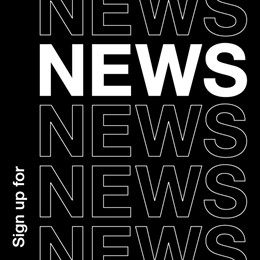The silly fear that's crippling your B2B brand effectiveness

Tim Craig, managing director at integrated marketing agency mReaction, explains why the world of B2B brand design must be met with courage, not caution.
Every evening, my 11-year-old daughter Nyla turns my requests for her to switch off her iPad and study into musical-style song. With her powerful voice she belts out lyrics that defy logic but brim with creativity. She’s not afraid to be silly, and her performances often convert my sternness into a reluctant smile and a few more minutes of screen time. This got me thinking: why aren't we as inventive in B2B branding?
There's a long-standing fear in B2B: the fear of appearing silly.
Just as Nyla embraces her whimsy to connect with her audience to get what she wants, we in the branding world need to shrug off our self-imposed constraints. This fear stifles innovation, as ideas that seem too ‘out there’ are dismissed. This hesitancy isn’t just a barrier to creativity; it's a barrier to brand effectiveness and value creation.
Why the fear? Typically, B2B brands are often led by commercial stakeholders who expect their brand to be expressed in a professional, straightforward and traditional style. Venturing beyond this established style is risking the ire of senior colleagues.
Yet, here's the thing: embracing creativity and daring to be different do not undermine professionalism, directness or a focus on benefits. On the contrary, by differentiating, we amplify them.
Caught in a box-shifting commercial mentality, brands often focus solely on moving products, neglecting the power of brand building and emotional connection. This approach, while it may promise short-term gains, ultimately limits the ability to establish a differentiated brand and achieve a permanent competitive advantage.
Yet, our most successful B2B work has come from briefs that dared to be different, that blended directness with simple creativity that cuts through. These campaign results prove that B2B audiences are looking for connections that speak to them as actual people, not just a ‘problem looking for a proposition-fit’.
Then there’s the issue of relying on technology as a creative crutch. Over the last 20 years, Adtech has delivered undeniable efficiencies in targeting and message optimisation. It has also fostered an over reliance on technology, a tech-before-creative approach leading to a bland homogenous advertising in both B2B and B2C (Hegarty’s ‘creative deficit’). Recently, successful brands have learnt to not to mistake efficiency for effectiveness and differentiate their brand with creativity before optimising with data.
Now, there's a risk that AI, despite its astonishing promise, could double down on this mistake, a bastard love child of Adtech data and generative AI driven communication that, while efficient, risks being unimaginative and ultimately ineffective from lack of differentiation.
We're at a crossroads: either we over rely on AI to produce safe, predictable work, or we challenge ourselves to harness AI and performance data without losing the aura of humanity in our work.
Let’s remember that the essence of marketing, whether B2B or B2C, is about connection. It's about reaching out to our audiences, not with caution, but with courage, not with templates, but with simple tales that touch, teach and transform.
We can make our mark by being daring, by speaking directly, and yes, by sometimes allowing ourselves to look a little silly. After all, if an 11-year-old can captivate an audience with nothing but imagination and the courage to try it on, so can we.
Here's to the marketers ready to take that leap, to the colleagues and clients who understand that in the quest for impact, channelling our inner Nyla and risking a bit of silliness is a small price to pay for making a lasting impression.














